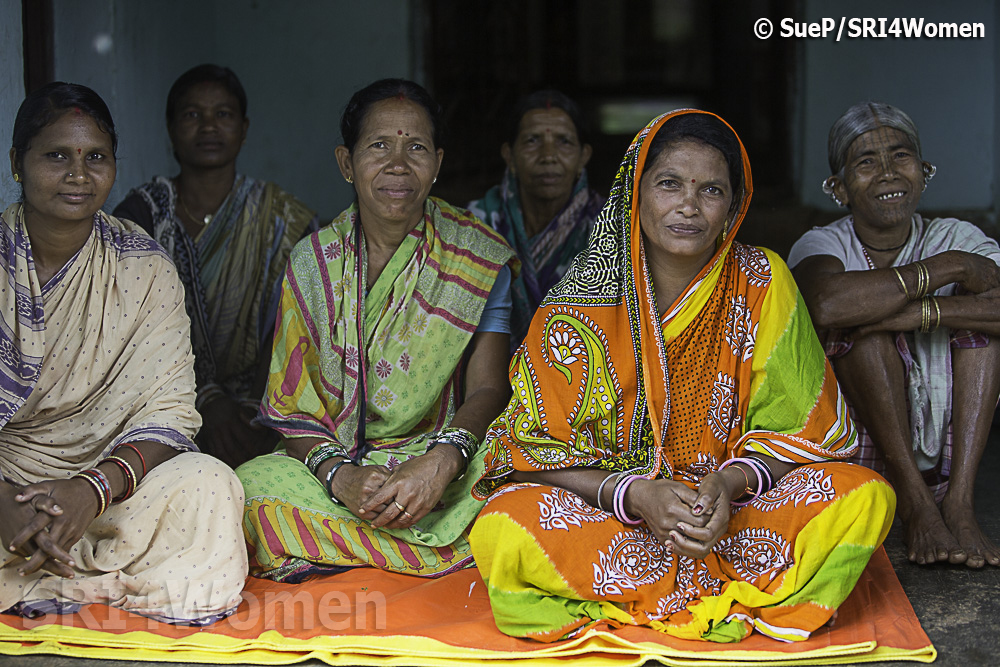Feminisation of Agriculture
Climate change and, at times, fluctuations in the market, have turned smallholder farming into a precarious business. Unpredictable rains make it difficult to properly time the planting season, drought can lead to crop reduction or even crop losses and floods can wash an entire crop away. For many, that crop represents a year’s supply of food. Increasingly the response to these issues has been drastic, as alternative ways to earn a living are sought outside of agriculture. Usually, the men leave first. “These days women are taking on ever more responsibility in managing rice production, as more men seek work off-farm to generate needed household income, a process characterized as the ‘feminization of agriculture'” (Olivier De Schutter, 2013 ). Women are having to take on the entire process of food production as well bringing up their children and caring for elderly relatives. It is a severe burden on all members of the family.
Speaking with a Self Help Group of women farmers in Kakerjora village, Odisha, India, we asked them why their group was formed of women only. Why only women? They looked quizzical. Why are there no men in the SHG? “Oh!” they said, “but the men have gone to the city to work.” There are hardly any men in this village.
But the women now work together growing crops using the SRI methodology. This means they can grow enough food on small plots of land. In fact, collectively, they manage rice crops and also mustard, millet and fruits and vegetables. The workload is lighter, the costs have been drastically reduced as they buy less seed and make their own organic pest control. Their yields are higher and they have a surplus, which they turn into products to sell as part of an additional income generating activity. In another village, Rajnapalli, we asked the women if these advantages meant that they could grow enough food and earn enough for the men not to have to seek work elsewhere. “No,” they said. “Sadly not. But SRI has given us the chance to grow our food without having to rely on the men. But we do still need their city incomes.”

This is not unusual. It is a phenomenon that is occurring across India and, indeed, the whole of Asia. Debashish Sen, director of the People’s Science Institute in Dehra Dun, Uttarakhand in the north of India, says that in that area, too, women are having to take on pretty much all of the agricultural activities: “what we are seeing,” says Sen, “in the last two decades, is that there is a lot of male migration from the countryside and agriculture is basically done by the women. So for them, if SRI can reduce the labour and the labour productivity goes up, there could be nothing like that.”
There are also many women who either head households or who have no support from men because they are unmarried, divorced or widowed. Such rural women in women headed households or single women can be left extremely vulnerable in terms of their rights, their access to a secure source of food and income and access to land and they do not have their incomes supplemented by husbands working in the city. Again, because of the potential for higher yields on small plots of land, reduced costs and reduced drudgery, SRI offers real hope for these women.
And the phenomenon of de-peasantisation is having an even more drastic impact as entire families migrate from rural areas, making particularly the women and girls vulnerable to trafficking.